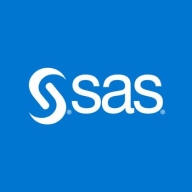

SAS Visual Analytics and Splunk Cloud Platform compete in data analysis and visualization, with Splunk Cloud Platform having a slight edge due to its strong real-time monitoring and integration capabilities.
Features: SAS Visual Analytics provides data visualization and analytics capabilities, offering scalability, stable performance, and robust visual reports. Splunk Cloud Platform excels in real-time monitoring, integrates multiple data sources, and focuses on log management and security, supporting diverse data types.
Room for Improvement: SAS Visual Analytics could improve integration with various languages, enhance user accessibility, and simplify their licensing model. Splunk Cloud Platform might benefit from improved visual capabilities, a clearer licensing model, and enhanced AI features for search.
Ease of Deployment and Customer Service: SAS Visual Analytics requires complex installation and professional services but offers hybrid deployment options with varied technical support feedback. Splunk Cloud Platform is praised for deployment flexibility in cloud environments, although support responsiveness and integration assistance could be better.
Pricing and ROI: SAS Visual Analytics is costly, especially with additional functionalities like machine learning, offering value mainly for larger organizations. Splunk Cloud Platform's pricing is data volume-based, also seen as costly, but both platforms present a high return on investment for large enterprises with considerable data management needs.
The enterprise subscription offers more benefits, ensuring valuable outcomes.
Splunk Cloud Platform has impacted operational costs; it's a bit expensive, but it provides value for money.
They provide callbacks to ensure clarity and resolution of any queries.
Premium support is costly and may not always provide a satisfactory experience.
SAS Visual Analytics is stable and manages data effectively without crashing.
In terms of configuration, I would like to see AI capabilities since many applications are now integrating AI.
Integration is a bit difficult due to the coding required for the integrations.
Splunk Cloud Platform needs improvement in its security offerings, specifically in cybersecurity.
Splunk Cloud is considered too expensive, with its two product offerings both being costly.
If I were to rate the price for the product from 1 to 10, I would rate it nine.
The ability to query information from our Excel data into SAS to view specific data is invaluable.
The most valuable feature of Splunk Cloud Platform is its robustness and ability to ingest logs.
The real-time search capability of this product enhances operational decision-making.
| Product | Market Share (%) |
|---|---|
| Splunk Cloud Platform | 1.2% |
| SAS Visual Analytics | 3.4% |
| Other | 95.4% |


| Company Size | Count |
|---|---|
| Small Business | 13 |
| Midsize Enterprise | 8 |
| Large Enterprise | 19 |
| Company Size | Count |
|---|---|
| Small Business | 11 |
| Midsize Enterprise | 6 |
| Large Enterprise | 42 |
SAS Visual Analytics is a data visualization tool that is used for reporting, data exploration, and analytics. The solution enables users - even those without advanced analytical skills - to understand and examine patterns, trends, and relationships in data. SAS Visual Analytics makes it easy to create and share reports and dashboards that monitor business performance. By using the solution, users can handle, understand, and analyze their data in both past and present fields, as well as influence vital factors for future changes. SAS Visual Analytics is most suitable for larger companies with complex needs.
SAS Visual Analytics Features
SAS Visual Analytics has many valuable key features. Some of the most useful ones include:
SAS Visual Analytics Benefits
There are many benefits to implementing SAS Visual Analytics. Some of the biggest advantages the solution offers include:
Reviews from Real Users
Below are some reviews and helpful feedback written by PeerSpot users currently using the SAS Visual Analytics solution.
A Senior Manager at a consultancy says, “The solution is very stable. The scalability is good. The usability is quite good. It's quite easy to learn and to progress with SAS from an end-user perspective.
PeerSpot user Robert H., Co-owner at Hecht und Heck GmbH, comments, “What I really love about the software is that I have never struggled in implementing it for complex business requirements. It is good for highly sophisticated and specialized statistics in the areas that some people tend to call artificial intelligence. It is used for everything that involves visual presentation and analysis of highly sophisticated statistics for forecasting and other purposes.
Andrea D., Chief Technical Officer at Value Partners, explains, “The best feature is that SAS is not a single BI tool. Rather, it is part of an ecosystem of tools, such as tools that help a user to develop artificial intelligence, algorithms, and so on. SAS is an ecosystem. It's an ecosystem of products. We've found the product to be stable and reliable. The scalability is good.”
Splunk Cloud Platform enhances operational efficiency with streamlined log management and real-time data analysis, offering customizable dashboards, seamless system integration, and a user-friendly interface that simplifies infrastructure management.
Splunk Cloud Platform stands out for its robust indexing and powerful search capabilities, delivering end-to-end visibility across environments. AI-driven security measures enhance cybersecurity intelligence, while its flexible log management reduces resolution times. The platform integrates effortlessly with diverse systems, supporting centralized log management, security monitoring, and application performance analysis. Users leverage its comprehensive analytics for troubleshooting, alerting, and visualization, optimizing costs and ensuring compliance with unified data sources.
What are the key features of Splunk Cloud Platform?In many industries, Splunk Cloud Platform is implemented primarily for unified log management, cybersecurity initiatives, and application performance monitoring. Businesses utilize it to streamline IT operations, integrate data sources, and leverage insights for troubleshooting and strategic decision-making, ensuring compliance and optimized resource use.
We monitor all Data Visualization reviews to prevent fraudulent reviews and keep review quality high. We do not post reviews by company employees or direct competitors. We validate each review for authenticity via cross-reference with LinkedIn, and personal follow-up with the reviewer when necessary.